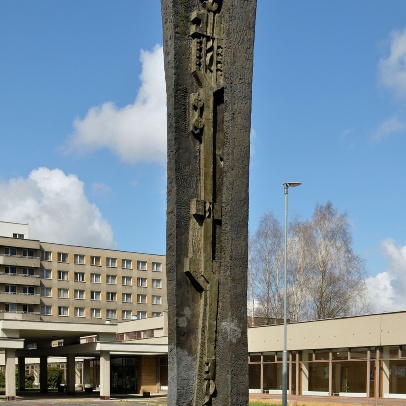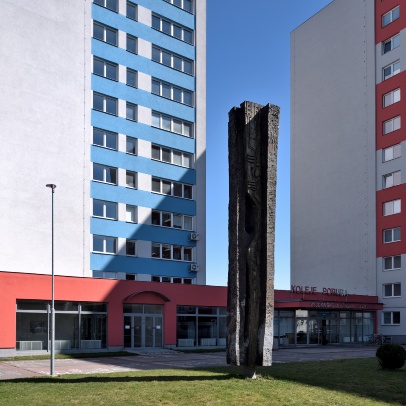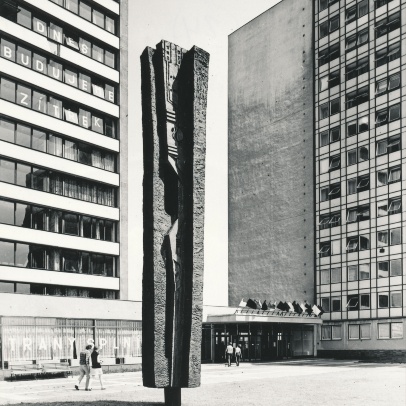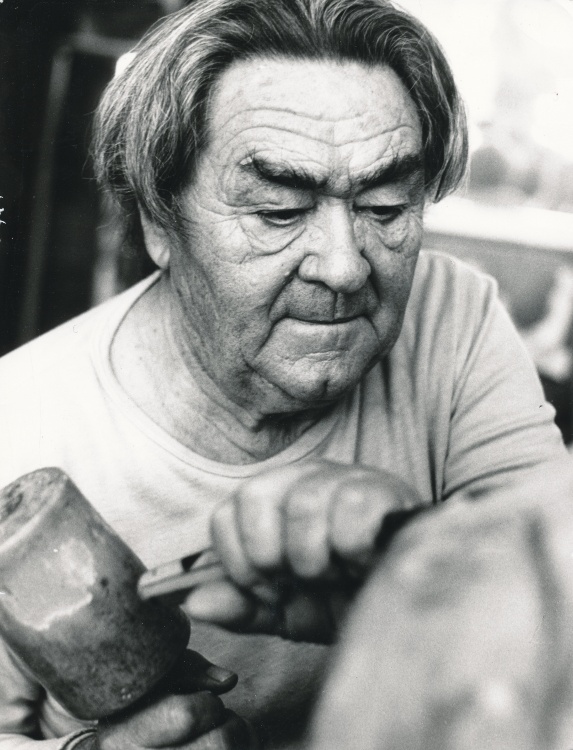Name: Stela
Author: Jindřich Wielgus, Jan Kudláček
Dating: 1966–1967
Location: in the exterior on the lawn outside the main entrance to the University halls of residence connecting to the VŠB-TUO campus in Poruba
Execution: an abstract, significantly vertical sculpture made from epoxy resin mounted on a concrete base, about 8 m high
FRAGILE VERTICAL
Stela by the sculptors Jindřich Wielgus and Jan Kudláček from 1966–1967 sits in the courtyard area outside the entrance to the main building of the University halls of residence. It forms a vertical accent, a landmark or a signpost between individual blocks of the halls of residence. The surface of Stela is dark, castellated, wrinkled and supplemented with symbolic technical details, which are not at all visible from a distance. Hence, most passers-by perceive the installation only as an erected column. Stela was made of laminate, which is not considered to be a durable material. Therefore, it has suffered from damage since its installation in the second half of the 1960s. The problem was both the stability of the tall column, which vibrated in windy weather and the resistance of relatively fragile material. Additional repairs are clearly visible on the surface of the material.
This abstract Stela differs from Jindřich Wielgus’ typical works, which were mainly sculptures and reliefs with figurative themes. The figurative motives of characteristic volumes portraying the themes of family, youth, and work are also present on the reliefs by the same author in the interior of the main hallway of the halls of residence.



